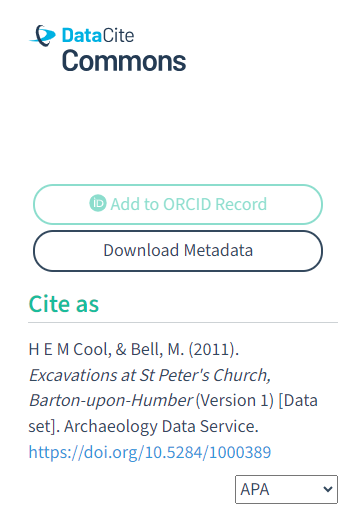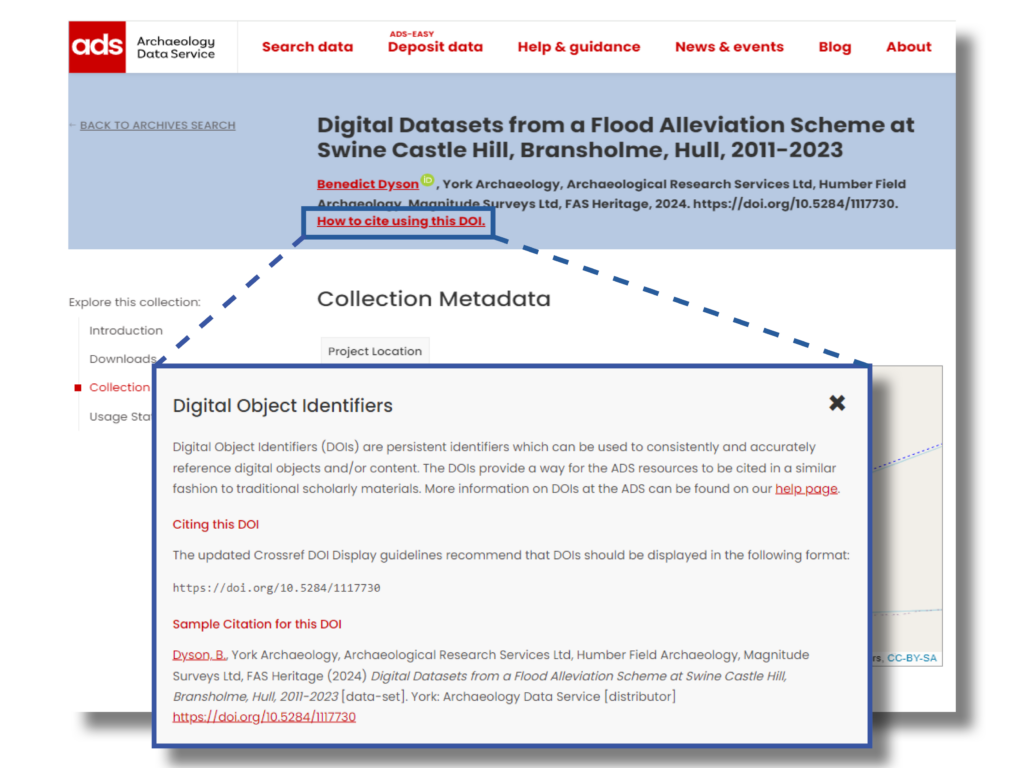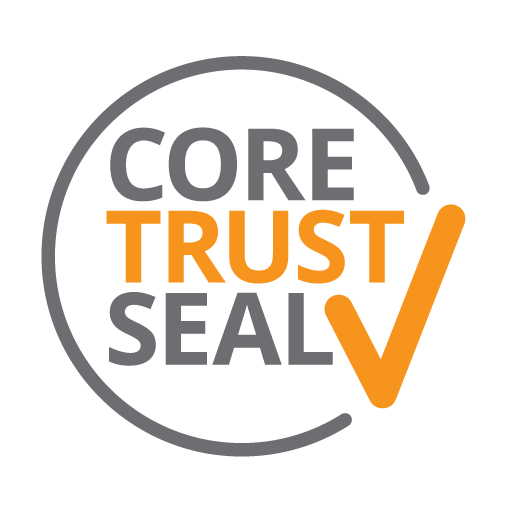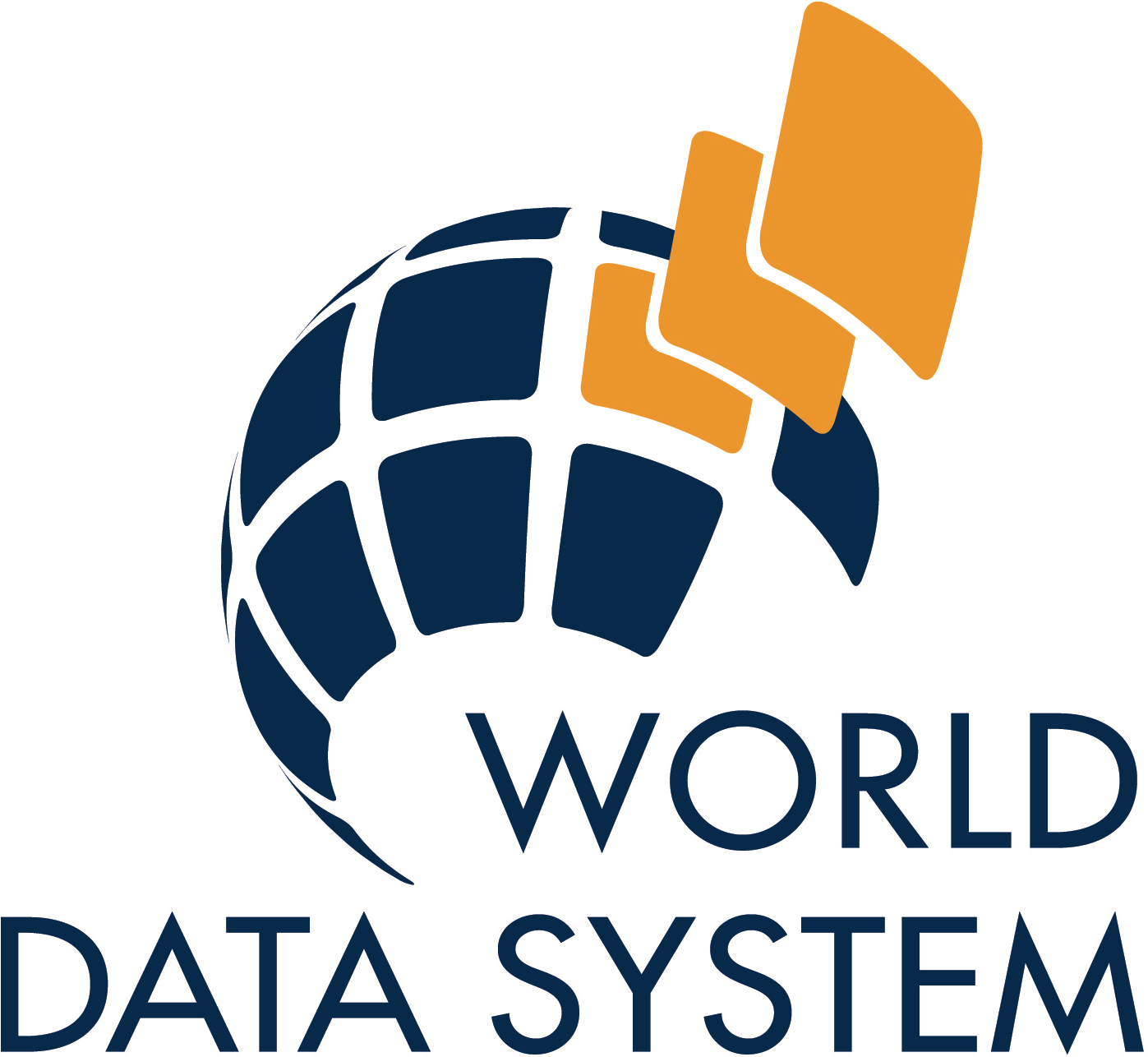This blog post in our series takes a deeper dive into how we create DOIs for the ADS collections by a process known as ‘minting’, as well as more information about our specific ‘mint’ – DataCite. If you are interested in how to search DOIs and the metadata associated with them, stick around to check out more information on DataCite Commons.
‘Minting’ a DOI
As we have explained in previous posts, a Digital Object Identifier (DOI) is a unique, permanent code that is used to identify digital content like research papers, datasets, or other scholarly materials.
“Minting” a DOI means registering this identifier for a specific item. Unlike the name suggests nothing physical is created, but rather a digital footprint is left that provides a unique identifier for your content.
To mint a DOI, you need to have already prepared your content for publication and have selected a DOI registration agency, such as DataCite or Crossref. We then submit the metadata for that content (which we request from you when you deposit with the ADS) to that registration agency and they provide us with a unique DOI that is linked to your content. Once minted, the DOI serves as a stable link to your content, making it easier for others to find, cite, and access it reliably despite any changes that may occur over time.
Minting a DOI is similar to cataloguing a book that you have written with your local library. In this analogy, the book is similar to the dataset that you want to archive, and the details you provide about that book, like the title and author, are the metadata that you submit to fill in the catalogue entry. If you’re familiar with libraries, you may know that each book has a unique identifier called an ISBN or International Standard Book Number. This number is the equivalent of the DOI, so whenever you search for this number, you will find the exact book you are looking for. Once catalogued, anyone can easily find and reference your book using this number.
What do we create DOIs for?
ADS uses DOIs minted by DataCite, created through our membership of a consortium led by the British Library. DataCite is one of a number of international organisations that provide DOI registration services.
We create DOIs for:
- All our deposited collections in the ADS Archives
- Distinct objects within a collection (upon request)
- All unpublished reports uploaded via OASIS
- All Journal articles and other publications in the ADS Library
When we register a DOI with DataCite, we pass on key metadata for that Object including who created it, when it was created and what it relates to. This metadata is then searchable in the DataCite interface, called DataCite Commons, alongside records from other repositories that are part of the DataCite community such as Zenodo or Dryad (more below).
Citing using DataCite
DataCite, as well as other registration agencies, provide useful tools that make it easier for you to cite the resources within their databases.
When you search and find your resource using DataCite Commons (more below), there is a handy ‘Cite as’ menu on the left-hand side of the page. Here you can change the Citation style using the dropdown (including Harvard, MLA and Chicago) and copy and paste the output straight into your text or bibliography.

Note: The ADS employs a similar popup on our Archives pages, where you can access a sample citation by clicking on the button ‘How to cite using this DOI’.

It is important to note that any citation or reference should include the DOI and not the URL that appears in a web browser. This important for many reasons but the most important is that the DOI will never change, but the URL might, which will mean your citation may not always link to the article, book or dataset that you intended.
DataCite Commons
DataCite Commons is a discovery platform provided by DataCite. It’s designed to be a comprehensive, one-stop shop for exploring connections between research outputs, researchers, and organisations. How does it accomplish this? Well it uses the DOIs for each resource, alongside other types of Persistent Identifiers for People (such as ORCIDs), Organisations (linked to the Research Organization Registry) and Repositories (such as the ADS).
Here’s a number of examples of records including those linked to my ORCID, the page for the University of York and the repository page for the Archaeology Data Service.
The strength of the platform is the ability to research across these different outputs, people, and organisations and explore the relationships and connections between these different entities. DataCite Commons serves as a hub for exploring the vast landscape of research outputs and their creators, making it easier to navigate the complex web of scholarly communications.
To find out more about how to use DataCite Commons, visit the Support pages on the DataCite Website and the image below.

DataCite REST API
If you are technically minded, these datasets can also be programmatically accessed via the DataCite REST API (Application Programming Interface). An API is an interface that allows for two (or more) computer systems to exchange information securely over the internet.
You do not need to be a DataCite member to access this data. You can search the data via a Public API, which doesn’t require any kind of authentication.
Some of the data that can be accessed via the API includes:
- The details of a single or list of DOIs
- Event data – information that tracks citations of DataCite DOIs quoted as sources in academic papers or other resources (more about this data can be found in a previous blog post by Deputy Director Tim Evans)
To find out more about the DataCite REST API please visit the Support pages on the DataCite website and the DataCite Training Videos on YouTube.






